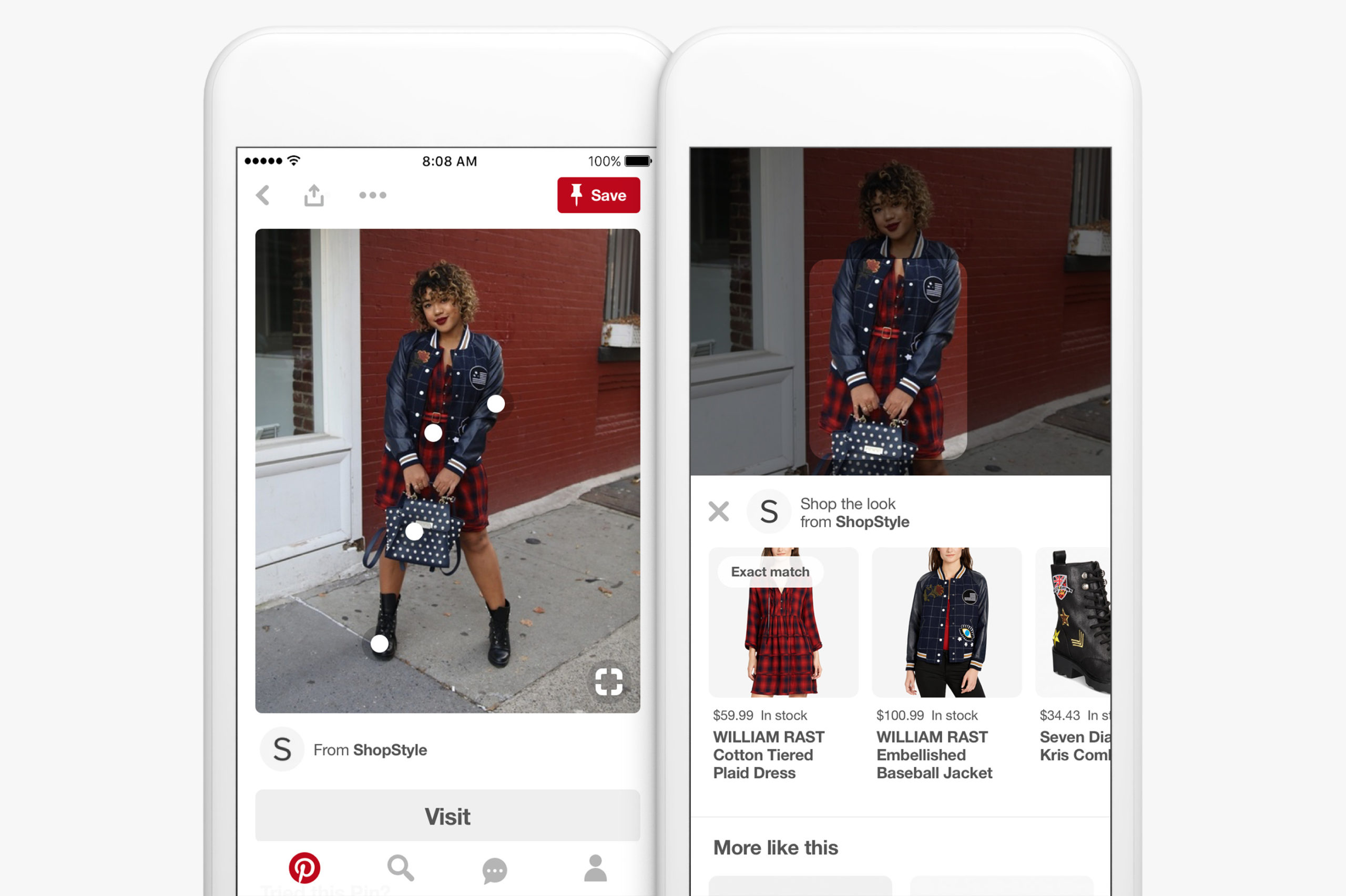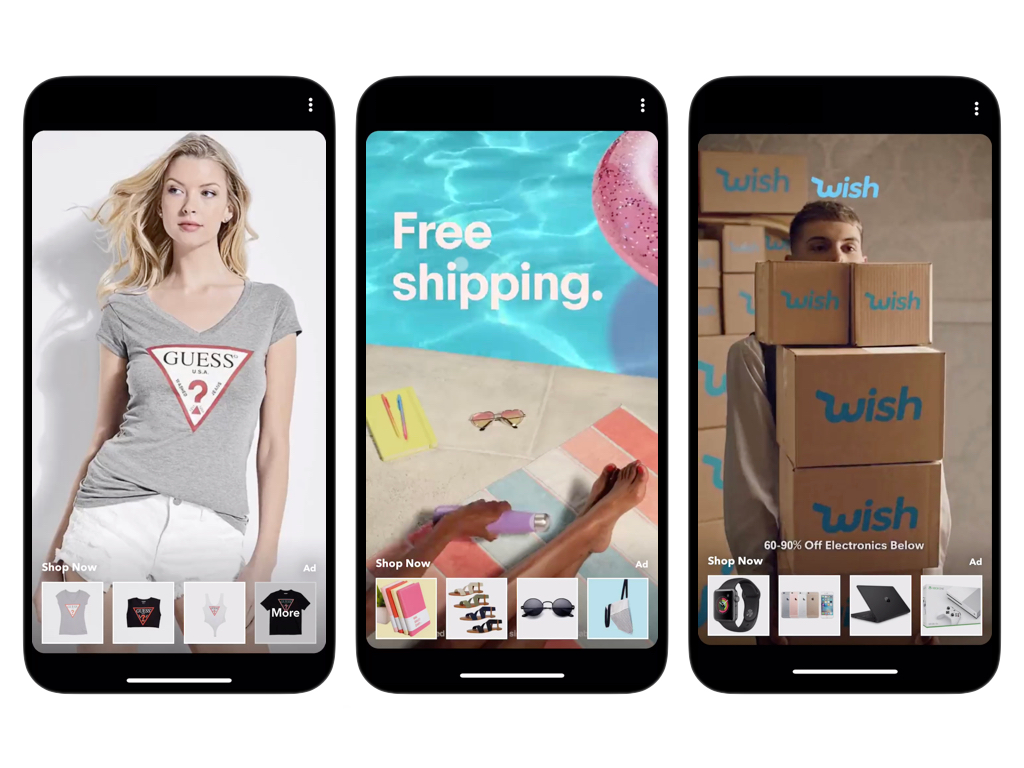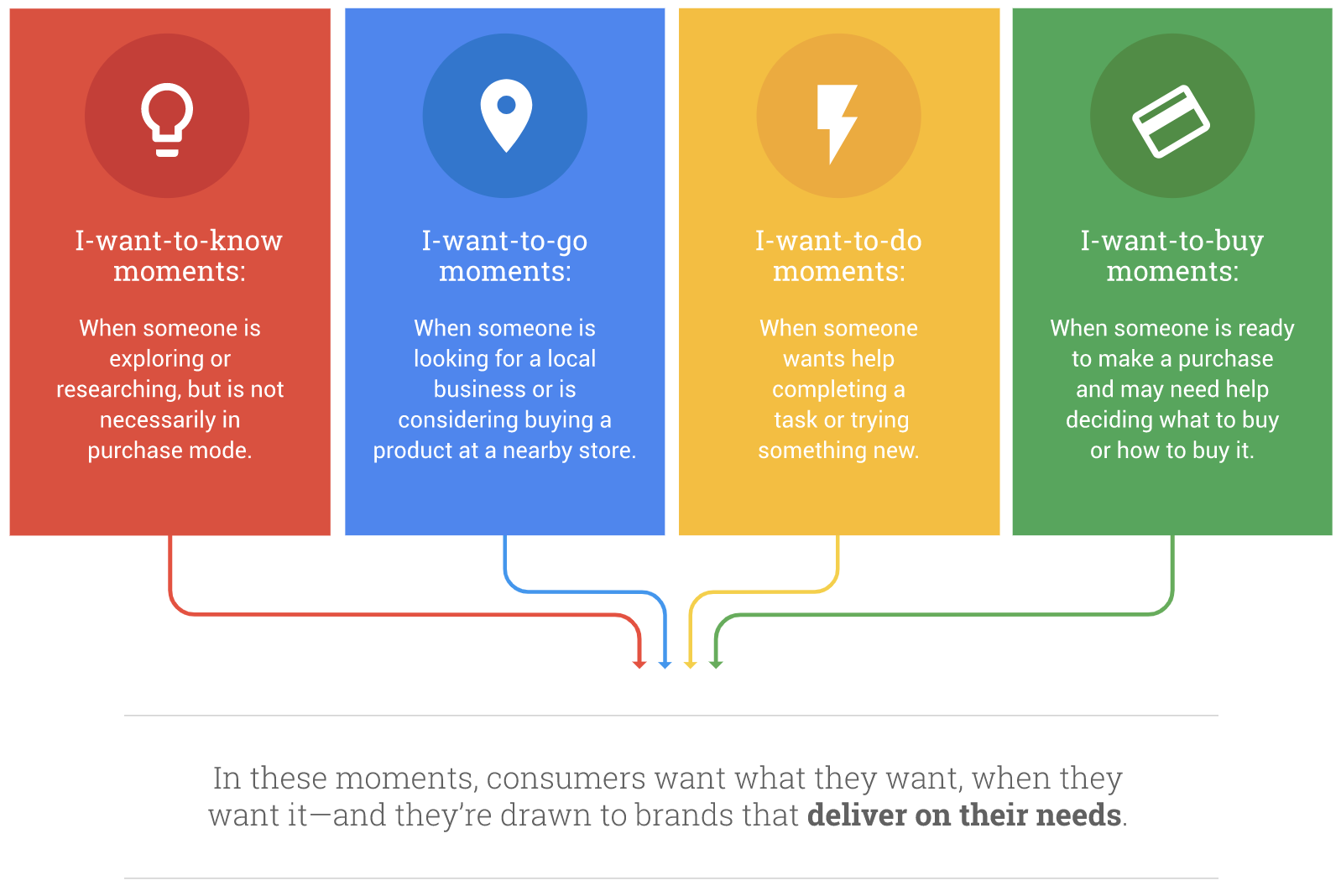Looking back at the history of marketing, the biggest wins often occur because a brand was able to predict a trend before its competitors. So as we’re rapidly approaching the end of the year, it’s time to take a look at what will likely be the most powerful growth marketing trends for 2020.
1. Voice Search
This wouldn’t be a marketing blog post about voice search if we didn’t mention that according to Comscore, in 2020, voice searches will account for 50% of all searches. While it may not be among the newest growth marketing trends, as voice technology develops in both its power and adoption, the brands that thrive will be the ones that adapt the best and the quickest. Within growth marketing trends, voice search has three major areas where it can make a huge impact in 2020.
SEO/VEO – As Google evolves from a “search” engine to an “answer” engine, their Featured Snippets (or SERP Position Zero) have led to a rise of zero-click searches and a drop in organic CTR. This not only makes this spot incredibly important for SEO, but the holy grail for capturing the voice search as this will be the result that Google Home or Alexa will read from. But how does one capture this spot?
Since voice searches are inherently conversational, they tend to include more words than the average search and are often in the form of a question, creating opportunity in the form of long-tail keywords. Crafting a piece that answers a specific question in depth is the best way to capture that position zero.
Standard SEO advice still factors as well, such as using structured data correctly and making sure pages are mobile-friendly. It also helps to ensure that Google My Business and other local listings (if applicable) are clean, relevant, and accurate.
Alexa Skills Marketing – Similar to how when smartphone apps took the world by storm and every brand decided they needed one, brands are starting to move into the Alexa Skills space as well. Like apps, the winning brands will be the ones that offer a useful utility, as well as a strong CTA. Ask Purina, Johnnie Walker, and Zyrtec – Your Daily AllergyCast are all great examples of brands that found a way to bring value to their customers, while also developing brand relationships and finding ways to facilitate product sales into the experience.
Voice for eCommerce – What about simple eComm stores that just want to leverage voice to get products in front of more users? That’s where an app like Jetson can come into play, which can connect to Alexa or Google Home, helping businesses get found outside of traditional search methods. This tool has a ton of potential, but expect to see more companies expand into the space 2020, making it more seamless for any business to be found via voice search.
2. Social Messaging Apps & Chatbots
With all that talk about voice search, it’s clear the future of marketing is becoming more conversational. The usage of social messaging apps is staggering. WhatsApp, Facebook Messenger, and WeChat have more than 1 billion active users each! So if consumers are comfortable within these platforms, it only makes sense for brands to follow suit and engage them in these areas. But what does this look like in 2020 and beyond?
Even as companies get better and better at optimizing their site experience, people still come to sites looking for a simple answer and will get frustrated if they can’t find it quickly. 82% of consumers expect an immediate response when they have a question, which shows the importance of these conversations. While brands have been using Twitter and Facebook messenger for a long time, keeping these tools human-powered has its limits.
Because of these human limitations, more and more brands are turning to chatbots, which some predict will handle 85% of customer service in 2020. They are available 24/7, can handle multiple inquiries at the same time and can learn and improve their results over time.
They also don’t require human capital and will cut business costs by $8 Billion by 2022, so it’s safe to say that Chatbots are already here to stay. They’ve been utilized with great success by large brands such as Lyft or Whole Foods for years now, but with the improvement and ease of use of new tools such as ManyChat or MobileMonkey, 2020 will show a rise in bot use by small and medium-sized businesses.
3. Visual Search
Continuing the discussion of growth marketing trends in the AI space, what if consumers could find your products and where to buy them online, even if they don’t know the name of your brand? Through visual search, this has become a reality. Visual search uses real-world images as the input for online searches, which are then absorbed by AI and machine learning to understand the content and context of these images and return a list of related results.

- Pinterest Lens – Pinterest is currently at the forefront of visual search, with a tool that can identify over 2.5 billion images. Pinterest Lens allows users to highlight specific sections of a Pin or submit their own photos to search and find visually similar Pins. But more importantly for brands and marketers is that for products priced less than $200, visual searches result in conversion rates of 8-10%.
- Google Lens – The Google Lens app can identify over 1 billion images and the app itself recently passed over 50 million downloads. Beyond the ability to visual search for products, the app rolled out several new features at Google I/O in 2019, including the ability to scan and translate text, the ability to identify and learn more about landmarks, plants, or animals via image search, and the ability to highlight popular restaurant dishes by scanning menus.
There are even several retailers such as Target and IKEA that developing their own visual search tools, as they see the potential for adding yet another method for people to find and purchase products. The primary takeaway here is consumers have more ways than ever to utilize search to find what they’re looking for. Brands need to be aware of all possible touchpoints and optimize accordingly.
4. Social Commerce
With the growth of social media and eCommerce, it’s only natural that they’d merge in a way that most seamlessly completes a sale. Being able to complete a transaction without making the user leave the app drastically reduces the likelihood they’ll abandon the sale. Utilization of social commerce is increasing across every demographic, and will only continue in 2020 and beyond.
- Instagram Checkout – Introduced in March of 2019, Instagram allows users to tap to view a product from a brand’s shopping post and proceed to payment without leaving the Instagram app. They’ve recently begun testing the feature in Instagram Stories as well.

- Shoppable Pins – While Shoppable Product Pins have been a core part of Pinterest’s offering for a while, in September of 2019 they were advanced to include the Pinterest Lens, again, making it easy for users to find and purchase products, even if they’re not sure of the brand or product name.

- Snapchat Shoppable Ads – Snap introduced their shoppable product in September of 2018, but continue to ramp it up, recently releasing Dynamic Ads, which allow brands to fully sync a product catalog, select an audience for prospecting or re-engagement, and let Snap’s system deliver the ad in real-time.

This space has the potential to come to dominate the world of social ads, with Deutsche Bank estimating shopping ads could be worth $10 Billion by 2021. In 2020, we expect that current social commerce will improve and other social platforms such as TikTok expand into the space.
5. AI Automation
The use of artificial intelligence and machine learning is another example that’s not so secret among growth marketing trends, but 2020 may be the year that it truly becomes front and center. “Big data” has been a buzzword for a long time, but where machine learning shines is crunching that data and giving actionable insights.
At a macro level, machine learning can crunch data much more quickly and accurately than humans, resulting in less manual work and less wasted ad spend. Google continues to release features that help this process. Smart Bidding removes the assumptions and trial and error of manual CPC, letting campaigns optimize towards lower-funnel metrics such as Maximizing Conversions, Target CPA, and Target ROAS. Their Responsive Search Ads remove the guesswork of A/B testing multiple versions of headlines and copy, instead, giving the option of setting up multiple headlines and descriptions within the same ad, allowing machine learning to test and optimize towards the best performing combos.
Beyond optimizing ad performance, AI also shines in audience segmentation. Facebook leverages customer data to find commonalities (location, demographics, affinities) and can then target people with those same characteristics. Google looks at signals such as search history and content consumed to identify people who are likely in the latter stages of a buying decision, allowing marketers to target people who are likely in the market for the type of product they’re selling. Again, less manual work and less wasted ad spend.
These are just a few examples of tools that are already being utilized, and they’ll only continue to grow into new areas in 2020. Signals such as what time to serve specific messaging and other predictive models will become more targeted and more accessible.
6. Micro-Moments
Micro-moments are “intent-rich moments when decisions are made and preferences shaped.” As smartphones have become an indispensable part of our daily lives, consumers now have an immediate outlet for whenever they have the urge to learn something, go somewhere, do something, or buy something.

Taking advantage of these moments requires a deep understanding of your consumer and their path to purchase. The consumer journey is nowhere near a linear as most marketing models make it out to be, so leveraging this growth marketing trend requires being prepared for a certain level of unpredictability.
When a consumer is ready to make a decision, think about where their first instinct would tell them to go. How can you be there and what relevant message can you deliver to them at that time?
7. Neuromarketing
Neuromarketing is a field of marketing that uses medical technologies such as brain imaging or scanning to study the brain’s responses to marketing stimuli, such as a message or an ad. Marketers then use this data to make more informed decisions about what customers prefer and why.
The technology has mostly been used in research environments but is continuing to grow in the marketing space with companies like Neuro-Insight, SPARK Neuro, and Sorter making it much easier for brands to utilize these insights.
8. Community Marketing
The more the world becomes digital, the more people crave community, searching for other like-minded individuals to discuss their shared interests, answer questions, and build relationships. These communities often expand into real-world connections in the form of meetups and events, often facilitated by social media or other sites like MeetUp or Reddit. With brands trying to squeeze more and more ROI out of their ad spend, one of the most cost-effective ways to grow is by leveraging a community of users, turning them into brand evangelists. Referrals and rewards are still the low hanging fruit that will continue through 2020 and beyond, but the real winners will be the brands that can spread their message and influence without any additional investment.
For example, products that can integrate user-generated content (UGC) are inherently ahead of the game. As users generate content, they have an inherent desire to share it, drawing in new users who will then create their own content, ultimately creating a growth loop that starts to sustain itself, without requiring any additional ad spend. Brands that don’t create content by themselves can still take advantage of this by giving their users something to share. Fitness brands like Peloton or Orange Theory give their users easily shareable social posts so they can share/brag about their workout, spreading the word to their own network about the brand.
9. Future of Influencers
The rumors of the death of influencer marketing has been greatly exaggerated. If anything, they’re continuing to grow. Spend on influencers continues to increase YoY, with estimates for 2020 ranging from $5-10 Billion. Why? In an age where product features can be easily copied, branding is as important as ever. While influencers aren’t going anywhere, they’re certainly changing. With Instagram experimenting with removing the “likes” as well as new regulations and guidelines on what needs to be labeled as an #ad, the way brands integrate influencers into their marketing strategy will continue to evolve in 2020.
While Instagram isn’t going anywhere, expect to see an even greater rise in TikTok, the fast-growing video app that’s highly popular among Gen Z. However, there’s a different level of fan interaction on TikTok compared to other social networks. TikTok specializes in challenges that encourage fans to interact with a brand or product in a way that feels organic but also allows users to have fun and be creative. This results in a much higher level of engagement in the creators considering all the time spent planning, shooting, editing, and sharing their videos. Brands like Chipotle, Google, and Guess have all found success creating a video “template” and letting creators run with it.
While people have become more wary of trusting the recommendations of the “A-List” influencers (see Fyre Festival), micro and nano influencers are as popular and influential as ever. Since they don’t feel any obligation to cater to the masses, they come off as more authentic within their niche, driving a stronger connection with their community and ultimately higher engagement rates.
10. SMS
Rarely is there a channel where consumers are asking for more marketing messages than businesses are providing, but surprisingly, that’s the current situation with SMS. 54% of consumers want marketing text messages, but currently, only 11% of companies are utilizing this channel!
This is pretty surprising, considering the potential impact that SMS can have. According to Garter, text message open and response rates as high as 98% and 45%, respectively. Compare that to the corresponding figures of 20% and 6% for email, and it’s possibly the highest converting channel in the market!
SMS is a great channel to announce sales or offer coupons to existing, high-value customers. Message personalization is especially effective at boosting SMS performance, so look for ways to utilize the data you have on user demographics (ex. location-specific offers, birthdays) or based on their behavior (ex purchase follow-ups, cart abandonment reminder). As mentioned earlier, chatbots can make this process even more seamless.
However, the Telephone Consumer Protection Act (TCPA) is a federal law that forbids companies to send text messages to consumers who have not given their consent. Privacy needs to be top of mind when planning your message strategy. Make sure customers have opted in to receiving text messages, always give them the option to opt-out, and don’t spam users with too many messages.
11. Privacy and Data Protection
Technological advancements have fueled the majority of the growth marketing trends on this list. However, each advancement is coupled with concerns about the use of personal data and privacy. And it’s not just consumer preference that’s shaping the future. The government is becoming more and more involved in regulating the industry.
Facebook’s Cambridge Analytica scandal came to a close earlier this year, resulting in Facebook being fined $5 Billion for data misuse and privacy violations. The US Government hasn’t stopped there either, opening additional investigations into TikTok as well.
As far as laws go, California is the first state to take action, instituting the California Consumer Privacy Act (CCPA) as of January 1, 2020. The simplified summary of the law is that it requires large companies to disclose what they’re doing with the data they collect on their users and gives those users the ability to request those companies to not sell it (with harsh penalties for non-compliance). It’s clear that citizens are taking their privacy seriously, and it would be no surprise to see more states take additional action.
As far as trends go, marketers in 2020 and beyond will have to earn customer attention and contact info, not buy it. The strategy of trying to buy mass awareness will work less and less. Marketers will need to get back to the basics, understanding who their customer is, what messages they will respond to, and how and when they want to receive them.
12. Returning to Marketing Basics
The history of growth marketing is filled with examples of companies that blew up off the back of one well-executed hack – AirBnB let hosts copy their listing to Craigslist and with one click; Dropbox essentially gamified its users to spread the word; Hotmail simply added a link to every outgoing mail.
While rapid growth is still possible, these silver bullets are becoming more and more rare in today’s hyper-competitive environment. After the short term boost, competitors will replicate the tactic or feature and it starts to become less effective. In the end, even with all the exciting new growth marketing trends, marketing will still come back to the basics.
There are more tools than ever at marketers disposals to learn about their audiences’ demographics, affinities, locations, and more. To drive results, marketers need to continue creating specific personas and crafting messaging that speaks directly to that person. In a world where people are flooded with generic product messaging and features, personalization is the only way to stand out.
While most digital marketers are relying on tools and analytics for optimizations, the basics of writing copy that connects and converts is as important as ever. Who is your customer? What are their true pain points? How can you help?
When product features can be easily copied, your brand and brand story are essential. Why should a consumer choose you over your competitors? What are your differentiating factors? What are you competing on besides price?
Growth marketing trends undoubtedly have a huge impact on the industry, but marketing principles are still incredibly important.
Utilizing Growth Marketing Trends for 2020 Planning
As you build out your 2020 marketing plan, it’s likely building off what was successful in 2019, and rightfully so. Marketing isn’t always about reinventing the wheel. It’s often about sticking to what works and looking for marginal improvements.
However, within each plan should include some testing, and not just A/B testing headlines, but really thinking outside of the box. Within the above growth marketing trends, think about what makes sense for your business, or what could have the biggest potential impact. We offer a multitude of these services and if you need help, well, you know who to talk to.






